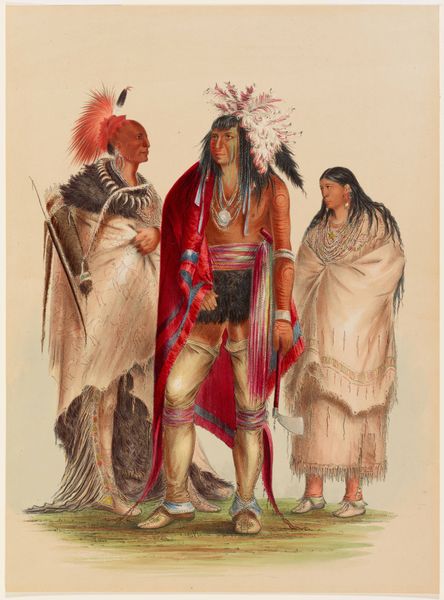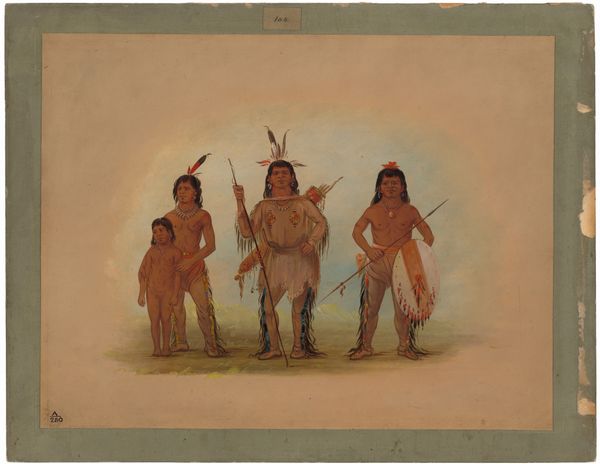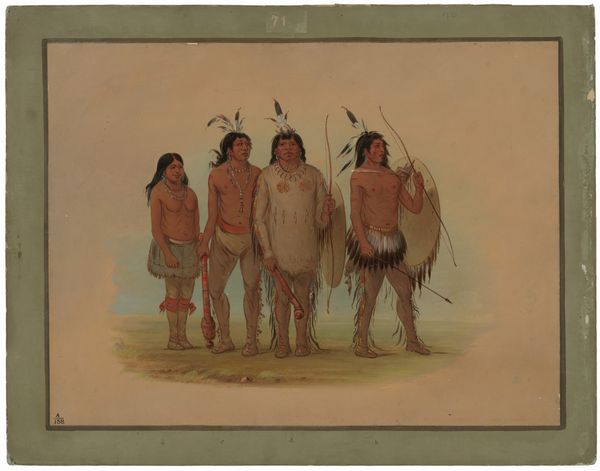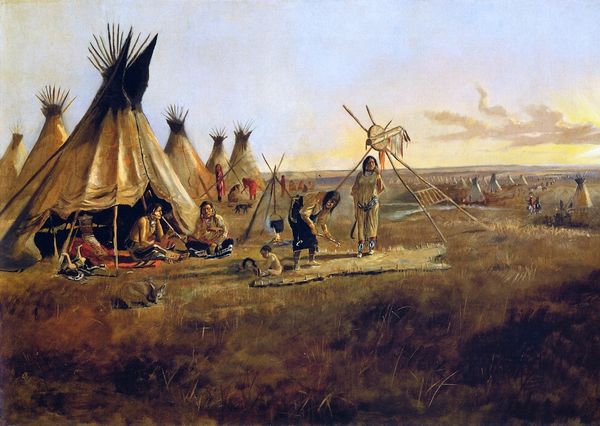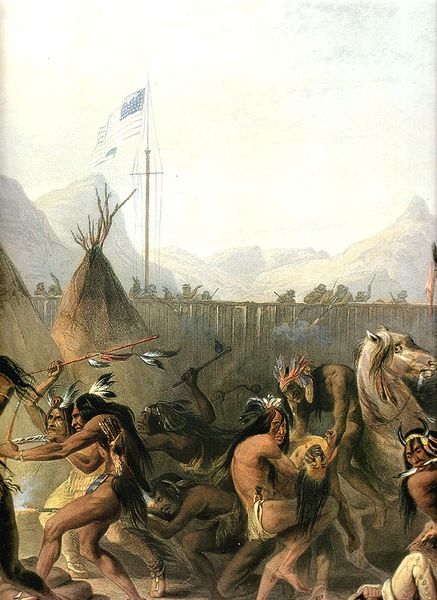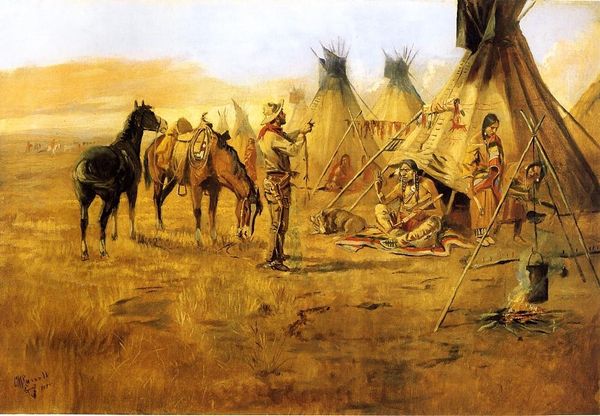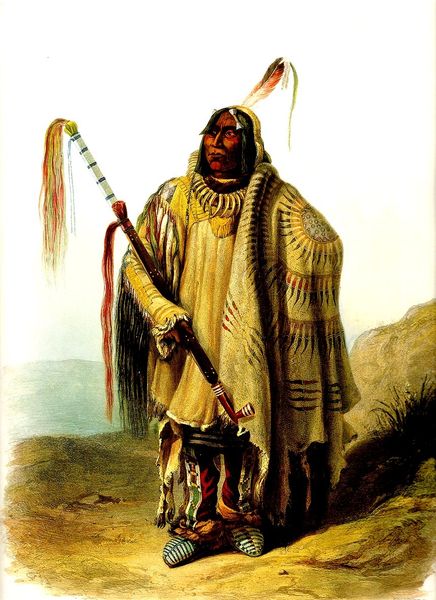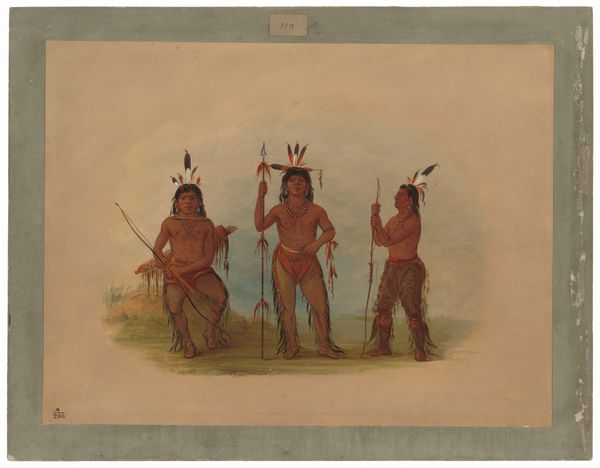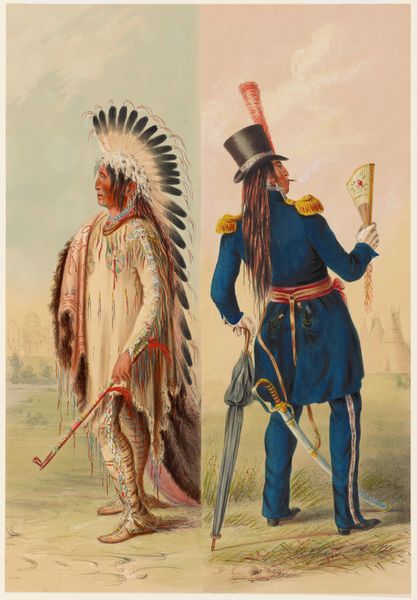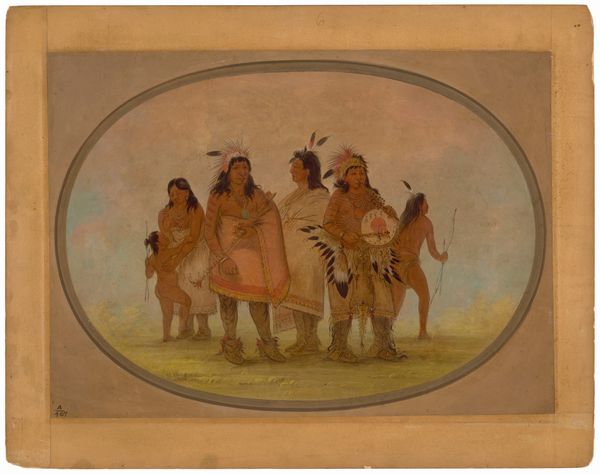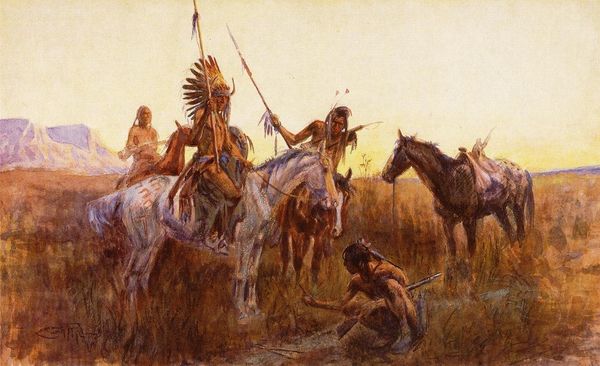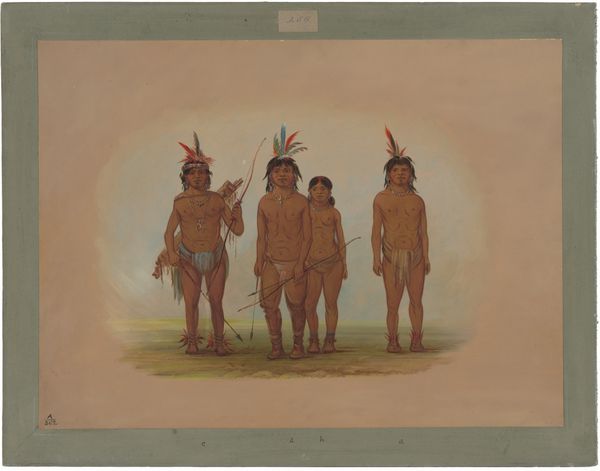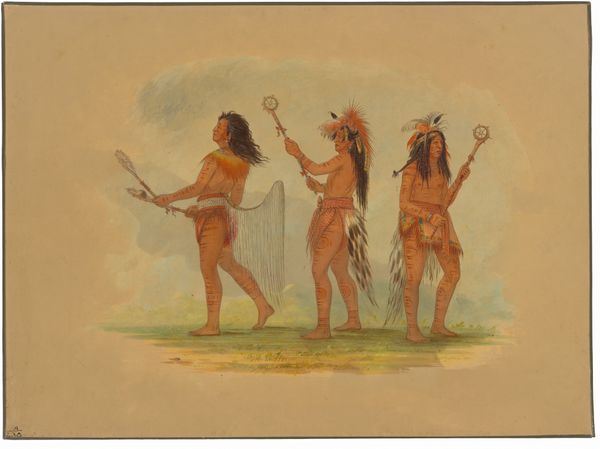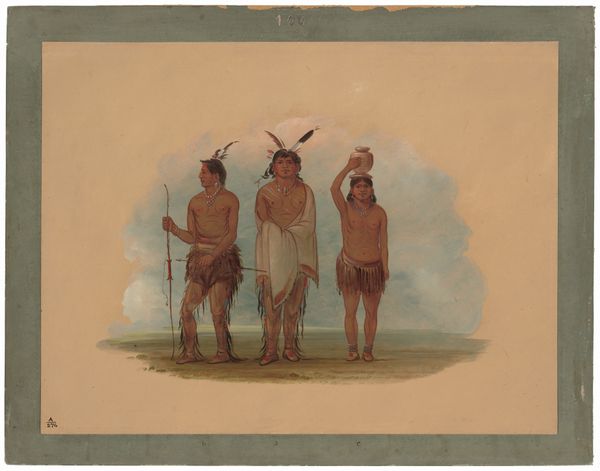
Big Snake, Chief of the Blackfoot Indians, Recounting his War Exploits to Five Subordinate Chiefs 1856
0:00
0:00
painting, oil-paint
#
portrait
#
painting
#
oil-paint
#
landscape
#
figuration
#
oil painting
#
portrait art
Copyright: Public domain
Curator: Before us, we have Paul Kane’s 1856 oil painting, “Big Snake, Chief of the Blackfoot Indians, Recounting his War Exploits to Five Subordinate Chiefs." Editor: Immediately, the formality strikes me, and also the painterly softness of the sky. The subjects appear posed, almost staged, in contrast to the dramatic title, which implies active storytelling. Curator: Absolutely. Kane aimed to document Indigenous life, but filtered through a Romantic lens. Consider the feathered headdress of Big Snake. Feathers signified honor, courage, and a connection to the spirit world. He wears potent symbols. Editor: The color harmony is also noteworthy. There's a muted palette of browns and tans, punctuated by touches of red and the ochre yellow of Big Snake's attire, which emphasizes his hierarchical importance. The shapes are repetitive. Curator: And note the presence of the teepees and horses in the background, symbols of nomadic life. These motifs speak to a specific moment of transition, before reservation life became widespread. It's an elegy, really. Editor: But I wonder, how authentic are these visual records? Kane was not Indigenous himself, and so the romanticisation might veil aspects of cultural appropriation or misunderstanding. Curator: It's a fair point. Visual vocabulary could, at times, prioritize aesthetics over absolute accuracy, in accord to 19th century tastes. Editor: I find the facial expressions especially intriguing, almost inscrutable, inviting us to question their feelings regarding the scene they're setting for us. The figures have been set inside a carefully constructed painting. Curator: Seeing this piece with new eyes, it becomes a testament to the power of symbols – their enduring resonance and the constant negotiation of their meanings across cultures. Editor: Indeed. Reflecting on this tableau, the layering of visuality and storytelling gives this historical depiction so many modern interpretations.
Comments
No comments
Be the first to comment and join the conversation on the ultimate creative platform.
